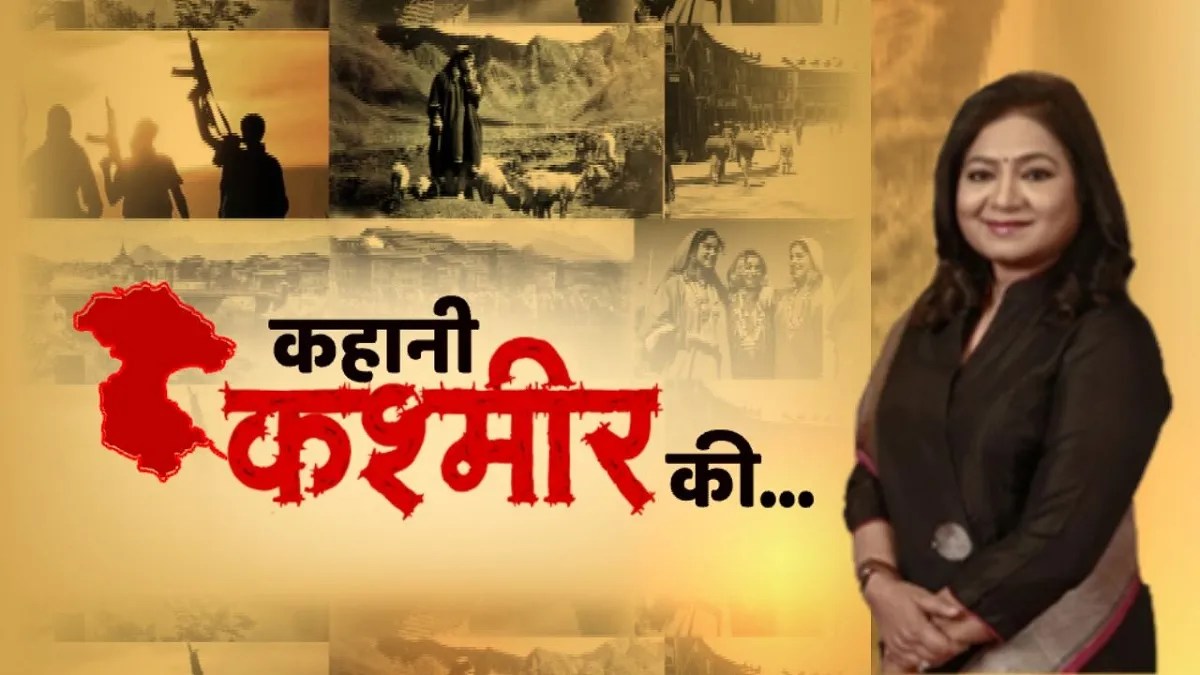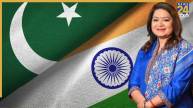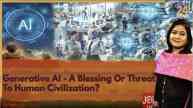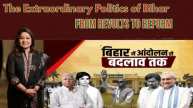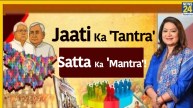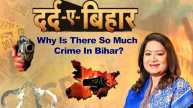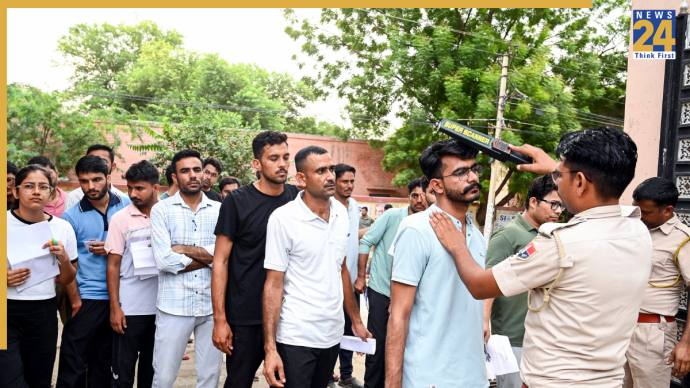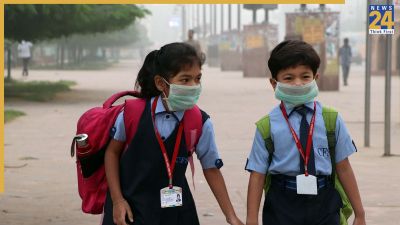Kashmir is often referred to as the heaven on earth, where the fragrance of saffron intoxicates the world, where the Chinar trees stand tall on the high peaks of the mountains and the rivers leaping through deep valleys sing a new song of life. This same Kashmir has been burning in the fire of terrorism for many decades, with the air poisoned with hatred. But now, Kashmir is changing rapidly. The people there are now waiting for the assembly elections, and political parties are also about to face a test. But have you ever wondered if the Kashmir Valley has always been blood-soaked, or if the passage of time has stained this paradise on earth with blood at different intervals? To find a permanent solution to Kashmir's ailments, it is crucial to understand the sentiments of its people and the circumstances that led to the sowing and reaping of the crop of terrorism in a once peaceful and guiding region. The philosophy of happiness in people's lives was replaced by the poison of jihad.
Where to begin the tale of Kashmir is a very difficult task. The air of Kashmir is infused with the shared heritage of Hinduism, Buddhism, and Islam. It has been the land of Sufi saints, the ground of knowledge and science. In ancient times, the pleasant breeze of spirituality used to blow in Kashmir to connect people, respecting all kinds of thoughts. This is why, about 870 years ago, the Sanskrit scholar Kalhana wrote in his chronicle Rajatarangini that Kashmir could be won with spiritual power, not with swords. Rajatarangini is considered the most authentic history of Kashmir. About two and a half thousand years ago, during the reign of Emperor Ashoka, Buddhism expanded in Kashmir. In the sixth century, a unique Shaiva philosophy developed in this region under the rule of the Huna dynasty's Mihirakula. There was a time when the boundaries of the state of Kashmir extended east to Bengal, south to Konkan, northwest to Turkistan, and northeast to Tibet. In the 10th century, the Advaita philosophy of Shankaracharya attracted the people here. With the arrival of Muslims in Kashmir, the efforts to spread Islam also intensified. However, Kashmir continued to progress by harmonising different religions. This shared culture came to be known as ‘Kashmiriyat’.
Once the land of Sufis
A strong current of Sufism was flowing in Kashmir. There was a significant number of followers of Sufi Islam. In Kashmir, Hindus, Buddhists, and Sufi Muslims lived together harmoniously, respecting each other's feelings and traditions. In the 14th century, Kashmir was ruled by King Sahadeva when Mongol invaders attacked. Initially, Muslim sultans adapted to the local culture, but later their narrow-mindedness started to impact Kashmiri society, leading to increased Islamization. As time progressed, in the 19th century, this region became part of the Sikh Empire under Maharaja Ranjit Singh. Later, it was ruled by the Dogra dynasty, with Maharaja Gulab Singh's rule extending to the Karakoram mountain range, including Aksai Chin and Ladakh in the north.
When India-Pakistan locked horns over Jammu and Kashmir?
As India was rapidly approaching independence, there was a strange dilemma over Jammu and Kashmir. Would it become part of India or Pakistan? But Maharaja Hari Singh of Kashmir dreamed of declaring his kingdom independent. In this situation, Pakistan began sending infiltrators into Kashmir. To save his kingdom, Maharaja Hari Singh decided to accede to India and signed the Instrument of Accession. However, Pakistan attacked Jammu and Kashmir. Subsequently, the Indian army began to drive out the Pakistani infiltrators and army. On December 30, 1947, the Jammu and Kashmir issue reached the United Nations, and both countries had to cease the war. The area held by each army was considered the ceasefire line, known as the Line of Control (LoC).
Rise of two constitutions, two leaders, and two symbols
Pakistan deceitfully took control of the Gilgit-Baltistan region of Jammu and Kashmir. Meanwhile, India's then Prime Minister Jawaharlal Nehru was handling the sensitive issue of Jammu and Kashmir himself, trying to find a middle path for political relations. By mutual agreement, Maharaja Hari Singh was made the constitutional head of the state, and Sheikh Abdullah was appointed the interim Prime Minister. To give special status to Jammu and Kashmir, Article 370 was added to the Constitution, and thus, two constitutions, two leaders, and two symbols existed in one country.
Pakistan resorting to proxy war
The results of the 1971 war made it clear to Pakistan that it could never win a direct fight against India. Thus, Pakistan decided to pursue a Proxy War, led by Zulfikar Ali Bhutto, who often said, “Bleed India through a thousand cuts," dreaming of wounding India severely. During this period, the Sheikh Abdullah government in Kashmir was rapidly renaming villages with Islamic names. Inciting speeches were made against Kashmiri Hindus. Pakistan then pushed its intelligence agency, ISI, forward. In 1982, Sheikh Abdullah passed away, and his son Farooq Abdullah became the Chief Minister. Pakistan continued its conspiracies. In 1987, the dates for the Jammu and Kashmir Assembly elections were announced. An alliance was formed between the National Conference and Congress. The radicals fielded their candidates under the banner of the Muslim United Front. The National Conference and Congress alliance won 87% of the seats, leading the Muslim United Front to allege election fraud, creating a tense atmosphere in the valley.
Steps by Union governments for Kashmir
Narasimha Rao handled the Kashmir issue very seriously. When the NDA government led by Vajpayee came to power, they worked diligently to improve the situation in Kashmir, aiming to solve the Kashmir issue through the principles of humanity, democracy, and Kashmiriyat. The Vajpayee government ensured development reached the people and conducted fair and peaceful elections. The state's power shifted from the National Conference to the PDP-Congress alliance. Improving relations with Pakistan was also essential for a permanent solution to the Kashmir issue, leading Vajpayee to travel to Lahore by bus.
However, this was followed by the Kargil conflict. As Home Minister in the Vajpayee government, Lal Krishna Advani initiated talks with the moderate faction of the Hurriyat Conference, and in the UPA government, Manmohan Singh also tried to solve the Kashmir issue through dialogue. The discussions between Delhi and Srinagar continued, but no concrete solution emerged. In 2014, Narendra Modi became Prime Minister with a strong majority and began his mission for Kashmir. In his second term, Modi made a significant decision regarding Jammu and Kashmir. On August 5, 2019, the Modi government abrogated Article 370, which gave special status to Jammu and Kashmir, and discarded Article 35A, ending the system of two constitutions, two leaders, and two symbols in one country in a single stroke. The state was bifurcated into the Union Territories of Jammu and Kashmir and Ladakh.
Modi govt’s befitting response to Pakistan
The Modi government ended Jammu and Kashmir's special status and divided the state, delivering a 10,000-volt shock to Kashmiri extremists, terrorists operating from Pakistan-occupied Kashmir, and Pakistan itself. Rapid efforts began to put Kashmir on the path of development. The people were happy, but the faces of those involved in Kashmiri politics were gloomy. Gradually, the situation in Kashmir began to normalise. The rapid changes in Kashmir's atmosphere were proving to be the final nail in the coffin for extremists and terrorists. Those who had once left their homes due to fear began considering returning. People from other parts of the country started arriving in Kashmir for livelihood opportunities. The changing situation began to benefit the common people of Kashmir. When separatist strikes no longer closed schools, when reduced terrorist attacks brought a flood of tourists to Kashmir, and when ongoing construction projects in Jammu and Kashmir provided employment to the youth, the positive changes were evident.

